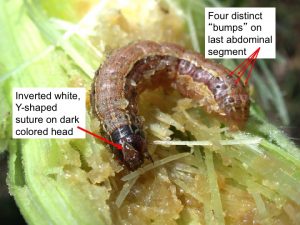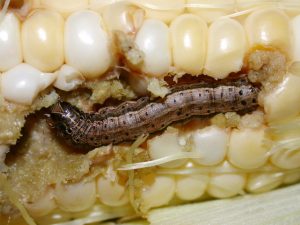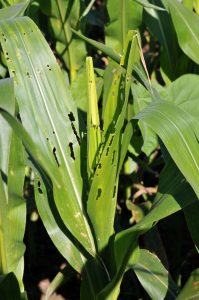Fall armyworms (Figure 1) are only able to survive the winter in extreme southern US, along the Gulf Coast and in Florida. Fall armyworms tend to migrate northward gradually, with each successive generation moving several hundred miles further north. They reach Indiana every year, but their populations are unpredictable in numbers and location. This week we have received reports of fall armyworm infestation in corn from southwest Indiana and northern Elkhart County, so they are throughout the state. However, infestations tend to be spotty, with individual fields or even portions of a field showing damage, with neighboring fields uninfested.
Fall armyworms will feed on corn at all stages of development and will feed on all above ground plant parts (Figure 2 and 3). However, their late arrival in Indiana (July-August) means that we are mostly concerned about feeding on kernels in the ear. Because of the higher value of the crop, sweet corn, seed corn, and popcorn growers should be particularly observant for possible fall armyworm infestations. Late planted sweet corn can be attacked during the whorl stage and may require an insecticide application in the late whorl/early tassel emergence stage in addition to the normal earworm spray program. Seed corn and popcorn are beyond the whorl stage now but may benefit from an insecticide application if damaging populations are observed. The pyrethroid insecticides still provide good control of fall armyworm in the US, although resistance has been observed in Puerto Rico.


